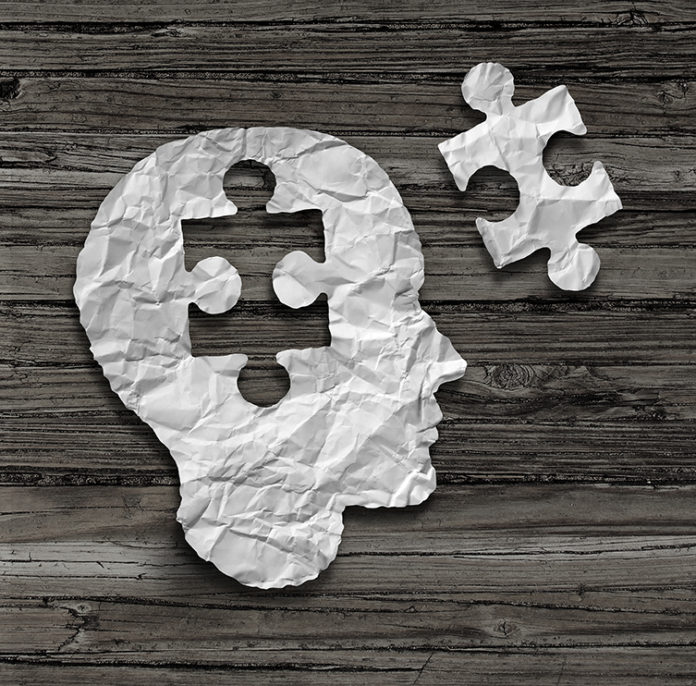By Catherine Varner
As an Emergency Medicine physician and researcher, I encounter patients with head injury very frequently. While we see a significant amount of serious and complex cases in the emergency department at Mount Sinai Hospital, for the majority of head injuries that come through our doors, most will have symptoms of concussion, also referred to as mild traumatic brain injury, rather than intra-cranial damage. How we prevent, diagnose and treat concussions is changing, as we broaden our scope of research. Historically, the majority of published concussion studies have been focused on head injury as a result of sports, resulting in somewhat of a knowledge gap because the majority of adult concussions diagnosed in the emergency department are from injuries sustained in motor vehicle collisions, falls, bicycle accidents and work-related accidents. Filling knowledge gaps in emergency medicine is one of the mandates of the Schwartz/Reisman Emergency Medicine Institute (SREMI) and a study that we published earlier this year, challenges the standard protocol in treatment.
The study, published in Academic Emergency Medicine, demonstrates there is no difference in symptoms or recovery times between patients who received standard post-concussion discharge instructions developed by the Centre for Disease Control and those who did not. In the study, 118 patients entering Mount Sinai Hospital’s Schwartz/Reisman Emergency Centre with a concussion were divided into two groups. Only one group received the standard medical recommendation to refrain from physical and cognitive activities (such as reading, talking on the phone, watching TV and exercise) with a gradual return to regular activity. Follow ups were completed at two- and four-week intervals, and appropriate measures were taken to ensure the safety of all patients.
This is an interesting study for us because it challenges current guidelines. While there is still ample evidence for rest for 24-48 hours following injury, and if symptomatic, to not operate heavy machinery or drive for 24 hours, beyond that, there seems to be indication that normal activity could and should resume. In fact, strict bed rest should be avoided as it has been shown to worsen symptoms and prolong recovery. Contact sports should be avoided until the treating physician says its ok to resume – to avoid risk of a repeat head injury.
Another departure from the current treatment guidelines is a recent interest in exercise as a treatment for acute concussion. Published in the Journal of the American Medical Association in December 2016, a study led by Dr. Roger Zemek, a pediatric emergency physician and concussion researcher at the Children’s Hospital of Eastern Ontario, indicates that physical activity within a week of a youth’s head injury may hasten recovery. Children and teens with concussion were less likely to have persistent symptoms 4 weeks after their injury if they engaged in light aerobic exercise within the first week. The results from this study and other human and animal studies suggest physical activity may, in fact, prevent persistent concussion symptoms.
The good news is that for between 80-90 per cent of patients diagnosed with concussion, typical symptoms such as headache, nausea, vision changes, sleep disturbances, disorders of balance, fatigue, irritability, memory and concentration problems will abate between 7 to 10 days. Patients with acute concussion don’t typically require medical interventions, treatments or subspecialty management. In fact, education about these symptoms and reassurance may help decrease the likelihood of persistent symptoms.

Although early and spontaneous resolution occurs in most patients, a small proportion of adults with concussion will have a protracted course. Between 15-30 percent of patients with concussion develop persistent symptoms such as headache, nausea, emesis, memory loss, dizziness, diplopia, blurred vision, emotional lability, or sleep disturbances. This is known as post-concussion syndrome (PCS) and it usually lasts 2-4 months, with symptoms typically peaking 4-6 weeks following the injury. However, about 20 percent of patients with PCS can have symptoms for a year or longer, and will end up being off from full-time work for a year after the initial injury, and some are disabled permanently. Interestingly, psychological counseling is one of the few interventions shown to effectively treat protracted courses of PCS. This very patient-centred approach involves education, reassurance, and reattribution of symptoms to benign causes, and considers the complex neurobiological and psychological factors impacting the patient’s recovery. It also re-establishes a new and effective sense of self by focusing on gaining control over symptoms through compensatory strategies and modifying emotional responses.
For patients who experience persistent symptoms four weeks following the injury, a referral for a more comprehensive evaluation with a specialist may be required. Risk factors that may indicate the need for a specialist include:
- Post-traumatic amnesia
- History of previous traumatic brain injury
- History of previous physical limitations
- History of previous neurological or psychiatric problems
- High number of symptoms reported early after injury
- Reduced balance or dizziness during acute stage
- Confounding effects of other health related issues, e.g., pain medications, disabling effects of associated injuries, emotional distress
- Presence of memory problems after injury
- Personal, psychosocial, or environmental factors that may negatively influence recovery post-concussion
- Not returning to work or significant delays in returning to work following the injury
- Presence of life stressors at the time of the injury
- Older age
- Lack of social supports
- Less education/lower social economic status
(Adapted from the Ontario Neurotrauma Foundation Guidelines for Mild Traumatic Brain Injury and Persistent Symptoms)
It is indeed encouraging that there is an increase in knowledge and clinicians providing concussion care in Canada. But there remains a wide variability in practice and a dearth of multi-disciplinary concussion programs in Ontario. To address the issue, the Ontario Neurotrauma Foundation convened the Summit on Concussion Care last year, which brought together patient advocates, health care professionals, and concussion experts to begin the process of developing standards of concussion care in Ontario. New standards will indeed strengthen our ability to provide individuals with ongoing concussion symptoms evidence-based care from qualified providers.
While the best way to approach concussion care is to prevent it – for example, using helmets in sports and recreational activities, we also need to ensure that we are using the very best practices for this patient population. The evolution of those practices require an investment in research to better understand how to prevent persistent symptoms and a robust system to ensure that all clinicians are knowledgeable about the new advances of this dynamic field.
How is concussion diagnosed?
A diagnosis is based on the following definition of a concussion: the result of a direct blow to the head, face, neck or elsewhere on the body with a force transmitted to the head which may or may not involve loss of consciousness and results in brain injury with one or more symptoms with one or more of the following symptoms: headache, nausea, vision changes, sleep disturbance, disorders of balance, fatigue, irritability, memory, and concentration problems.
Because concussion isn’t a structural injury, abnormalities aren’t detected by standard neuroimaging such as MRI. Medical imaging is only used in cases where there is a suspected skull fracture or intracranial bleed. Using the Canadian CT Head Rule as a guide to determine the need for imaging, helps to minimize radiation exposure without jeopardizing patient safety.
Catherine Varner is an emergency medicine physician at Mount Sinai Hospital, part of Sinai Health System, working in the Schwartz/Reismen Emergency Department. She is also a researcher at the the Schwartz/Reisman Emergency Medicine Institute (SREMI) which was created in 2013 to change practice and improve patient care by conducting meaningful clinical research, and translating these results into practice through education.



